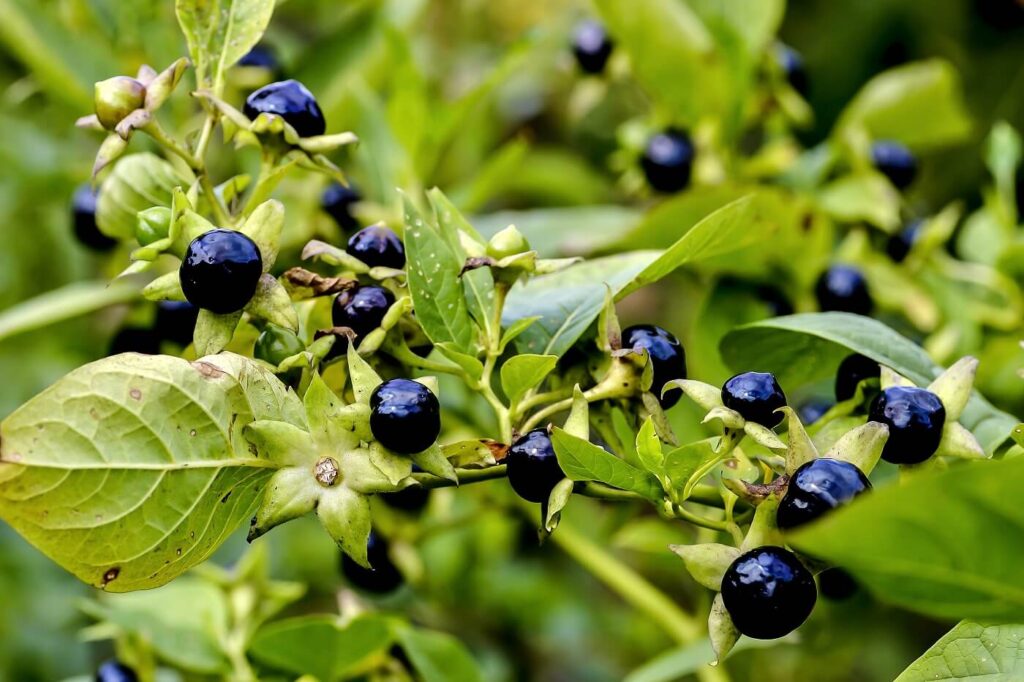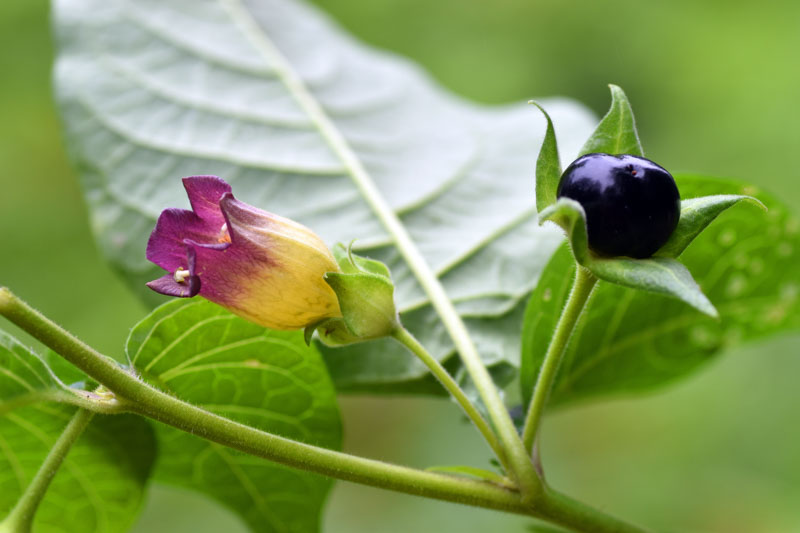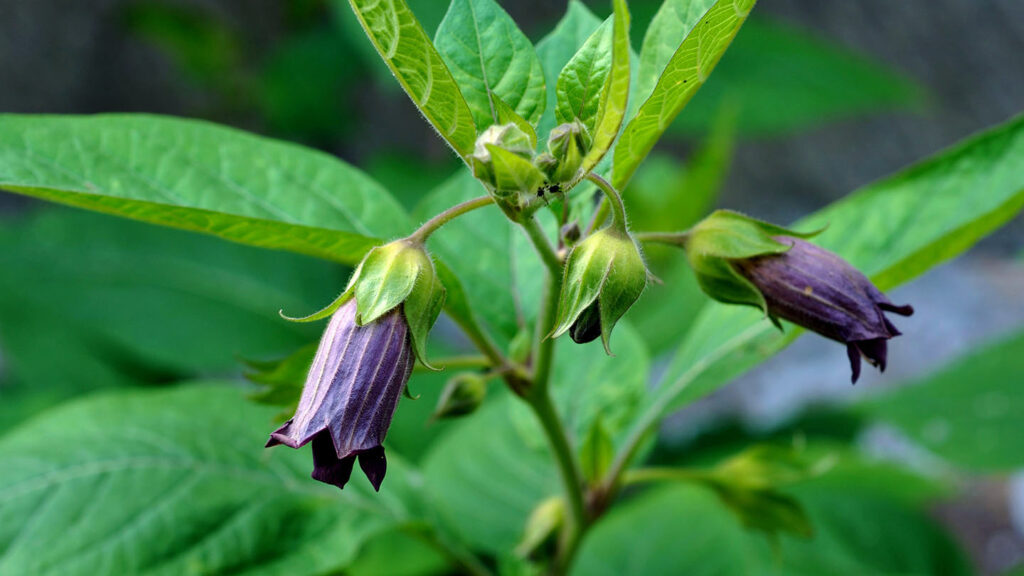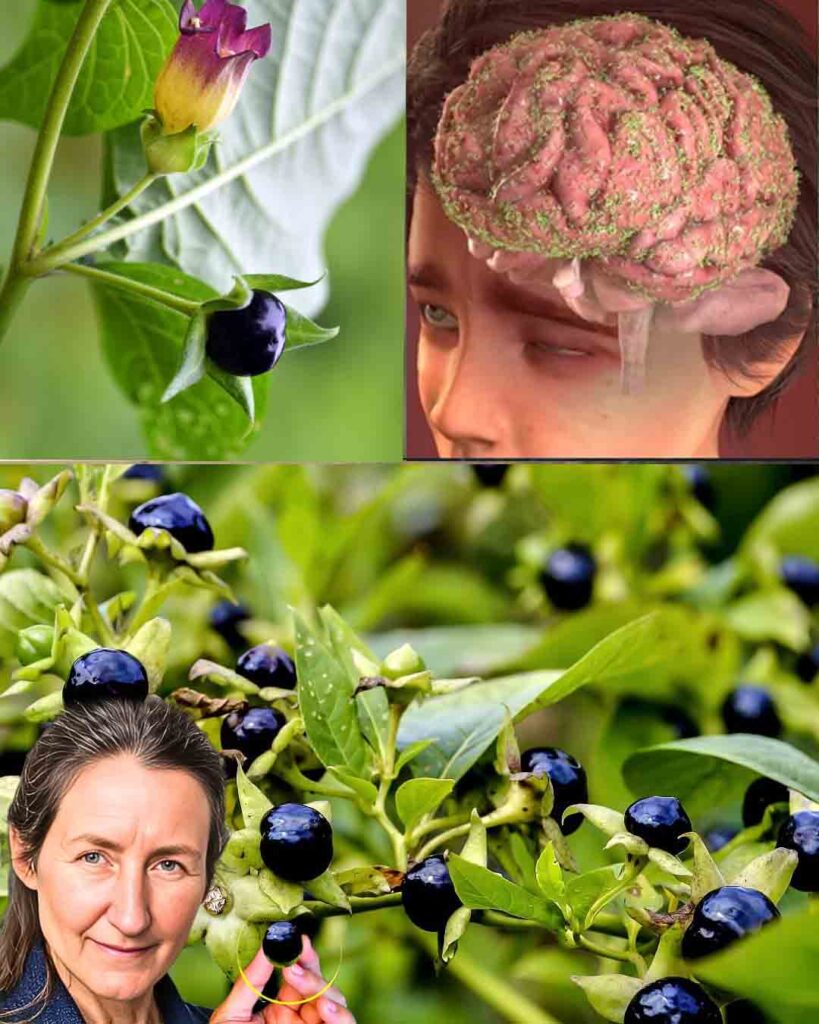Deadly Nightshade, scientifically known as Atropa belladonna, is one of the most infamous toxic plants in history. With its beautiful yet dangerous appearance, this plant has been surrounded by mystery, folklore, and medicinal uses for centuries. Despite its highly toxic nature, Atropa belladonna has played a significant role in traditional medicine, cosmetics, and even poisonings throughout history.
But what exactly makes Deadly Nightshade so dangerous? Is there a safe way to use this plant, or should it be avoided entirely? Let’s explore the history, effects, medicinal applications, and risks associated with this powerful yet perilous botanical.

1. What is Deadly Nightshade?
Atropa belladonna, commonly known as Deadly Nightshade, is a perennial herbaceous plant belonging to the Solanaceae (nightshade) family. Native to Europe, North Africa, and Western Asia, this plant is known for its dark purple berries, bell-shaped purple flowers, and lush green foliage.
While visually stunning, every part of the Deadly Nightshade plant—including its leaves, berries, stems, and roots—contains highly toxic alkaloids, making it one of the most dangerous plants in the world.
Toxic Components of Deadly Nightshade
Atropine – Affects the nervous system, causing hallucinations, rapid heartbeat, and paralysis.
Scopolamine – Known for its mind-altering effects, used historically in poisons and sedatives.
Hyoscyamine – Disrupts neurological functions, leading to severe poisoning or death in high doses.
These alkaloids block neurotransmitters in the body, leading to a variety of toxic effects, from blurred vision and dry mouth to respiratory failure in severe cases.
2. The History & Folklore of Deadly Nightshade
Deadly Nightshade has been used medicinally, magically, and lethally throughout history. Here are some fascinating historical uses:
Ancient Rome & Greece
Used by poisoners and assassins to eliminate political enemies.
Romans poisoned their arrows with extracts from the plant.
Medieval Witchcraft & Sorcery
Associated with witches and potions, believed to be an ingredient in flying ointments.
Used in hallucinogenic rituals, causing visions and altered states of consciousness.
Renaissance Beauty
The name “belladonna” (Italian for “beautiful lady”) comes from its use in cosmetics.
Women dilated their pupils with belladonna extract to achieve a seductive look, despite its toxic effects.
Modern Applications in Medicine
Despite its toxicity, Deadly Nightshade has been used in modern medicine to create drugs for eye dilation, muscle relaxation, and motion sickness treatments.
3. Symptoms & Effects of Deadly Nightshade Poisoning
Even small doses of Deadly Nightshade can cause severe poisoning. Here’s what happens when someone ingests or comes into contact with the plant:
Mild Symptoms:
Dry mouth & throat
Blurred vision & dilated pupils
Rapid heartbeat (tachycardia)
Confusion & dizziness

Severe Symptoms:
Hallucinations & delirium
Convulsions & muscle paralysis
Difficulty breathing
Coma & death (in extreme cases)
Who is Most at Risk?
Children – Attracted to the plant’s sweet-looking berries, which can be fatal in small amounts.
Pets & Livestock – Accidental consumption can lead to severe poisoning.
Herbalists & Foragers – Risk of misidentification when gathering wild plants.
Immediate medical attention is required if Deadly Nightshade poisoning is suspected.
4. Is There a Safe Way to Use Deadly Nightshade?
Despite its deadly reputation, Atropa belladonna has been used in controlled medical settings. Modern pharmaceuticals extract atropine and scopolamine from the plant for legitimate medical purposes.
Medical Uses of Belladonna Extracts
Eye Dilation Drops – Used by ophthalmologists to dilate pupils for eye exams.
Muscle Relaxants – Helps with spasms and muscle disorders.
Motion Sickness Patches – Scopolamine-based patches prevent nausea and vomiting.
Antidote for Nerve Gas Exposure – Atropine is used in emergency treatments for poisoning.
Never attempt to use Deadly Nightshade without medical supervision. Improper use can be fatal.
5. How to Identify and Avoid Deadly Nightshade
Since Deadly Nightshade resembles edible berries, it’s essential to know how to identify and avoid it in the wild.
How to Identify Atropa Belladonna
Flowers: Bell-shaped, purple flowers with a greenish tint.
Leaves: Large, dark green, oval-shaped leaves.
Berries: Glossy black berries (sometimes mistaken for edible wild berries).
Height: Can grow up to 6 feet tall.
Safe Foraging Practices
Never eat berries or leaves from an unknown plant.
Learn to distinguish Deadly Nightshade from edible nightshades (such as tomatoes or blackberries).
Keep children and pets away from areas where Deadly Nightshade grows.

6. Final Thoughts: Should You Grow or Avoid Deadly Nightshade?
As a Medicinal Plant: Atropa belladonna is used in modern medicine, but only in controlled environments.
As a Garden Plant: Some people grow it for ornamental or research purposes, but extreme caution is required.
As a Wild Plant: Avoid it at all costs if you’re foraging, as even small doses can be deadly.
While Deadly Nightshade is fascinating from a historical and medicinal perspective, its toxic nature makes it a plant to admire from a distance rather than cultivate or consume.

Key Takeaways:
Highly toxic & dangerous to humans and animals.
Historically used for poison, beauty, and witchcraft.
Still has controlled medical applications today.
Should never be consumed or handled without expert knowledge.
Have you ever encountered Deadly Nightshade in the wild? Share your experiences in the comments below!





